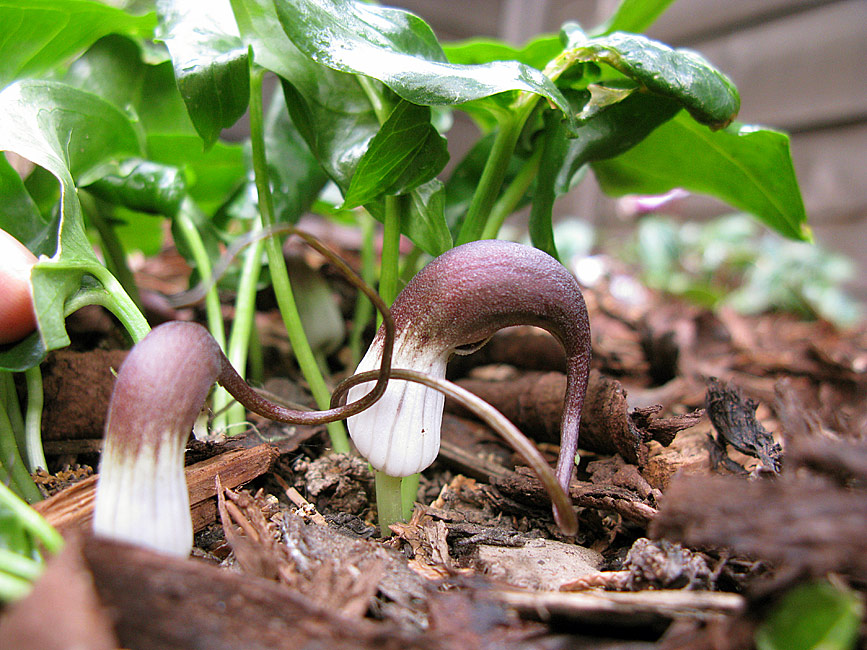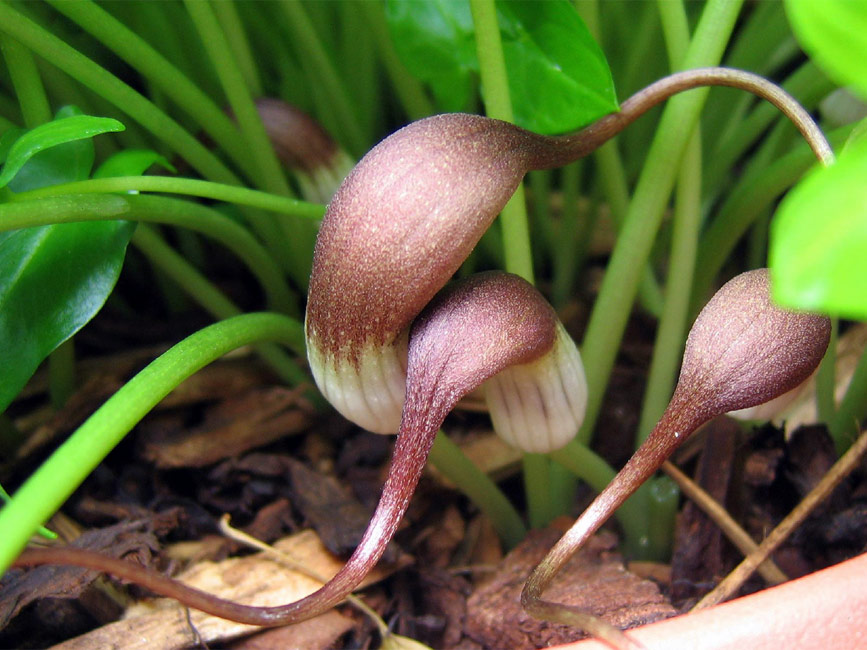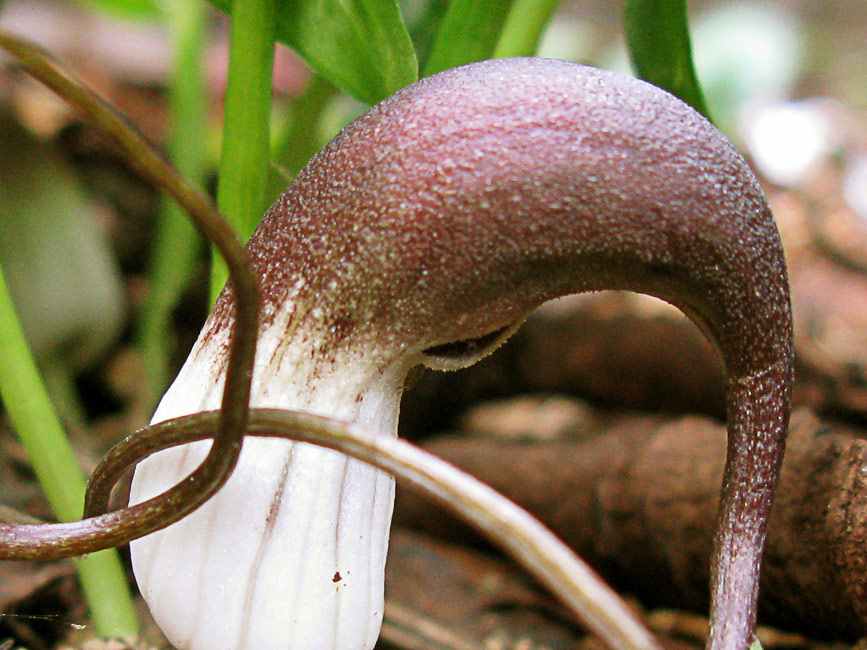Today we got five drops of rain here in East London, or something like that, just to tease us....and the hosepipe ban started today for 20 mill people in England. It’s going to be a long summer for everyone who has a garden or an allotment, trying to keep it alive. I am fortunate in that as a registered disabled and with a Blue Badge Parking Permit I am exempt from the hosepipe ban (and I promise to be careful with the water I use :-) ) but we might all feel the effect of the drought if this goes on for the whole summer. The farmers are already complaining about bone dry fields, if they don’t get weeks of rain soon it will affect harvest and subsequently the price of food for all of us. Yikes, we are still feeling the effect of the recession, and the food prices are sky high already....
OK, on to today’s topic, mice....nope, I haven’t had an invasion of wood mice, but rather something sweeter. Let me present you with Arisarum proboscideum, or the Mouse Plant, or even the Mouse Tail Plant as I have seen it described some places. Aren’t they sweet? Mine live in my woodland corner, together with crocuses, anemones, cyclamens, lily of the valley and Arisaema amurense. The mouse plant is a woodland aroid native of Italy and Spain, and has highly glossy, arrow shaped, dark green leaves which appear in early spring and disappears by midsummer. Later in spring, the short flower stalks emerge, resembling small 4" long purple mice with white bottoms, diving into the ground with their tails dangling in the air. If a gardener never thought to part the leaves, the flowers might well come and go never to be seen. These ultra-charming blooms are not quite entirely hidden because the tails make them six or seven inches long, so that either the maroon tail, or occasionally a portion of the main body of the mouse, will poke out of the shiny green arrowhead foliage.
The mice are most numerous in April but may persist to the start of summer. The creeping clump of leaves outlast the flowers by quite some while, but will be dying to the ground by August, sooner if its essential well-drained humus rich soil completely dries out. Be sure to mark the location well in order to not accidentally dig them up while they are dormant! Hmmm…I have done that, twice! The mouse plant is fully hardy and can withstand temperatures down to -15°C (5°F).
Height: 15cm (6in)
Spread: 25cm (10in)
....or so it said on several places I checked, but it depends on how you let it spread I guess, after 7 years, my tiny pot of a two-leaved mouse plant is a carpet in 3 areas of about 25cm square each....plus the 4 large 25 cm square carpets my friend Trevor has in his garden, plus the 3 smaller areas I have given to my next door garden....so yeah, I guess I got a lot for my money there! But I won’t call it invasive, if it spreads to a place you won’t have it, you just pull it up, pot it and have something nice and interesting to give away next spring :-) It grows from a tuber that develops rhizomes which develop more tubers and offsets, for a slowly expanding clump, never invasive but may after many years need to be lifted and divided.
This aroid has evolved over the millennium to do an interesting little trick. Its flower’s mimic a mushroom fungus, both with smell and it’s white spongy design to lure in unlikely pollinators. Its spring flowers “coincidentally” coincide with the first spring generation of ready-to-breed female fungus gnats. The gnats are tricked into laying their eggs inside of the flower head where they inadvertently pick up the plant’s pollen and carry it out with them to other arisarums. What a clever plant! A great conversation plant, and kids love the unusual flowers.
That’s it for tonight, tomorrow's another rain-free day according to the forecast, but we might get some showers next week. Might....will probably be just a tease again I guess. Until next time, take care :-)




Hi Helene!
ReplyDeleteYou had me scared there for a moment - mice! Yikes!!! Glad it turned out to be a very unusual plant instead of a rodent.
I feel bad about the water ban in England. We've had that happen in this area of Canada that I live in. Once several years ago our last rain was in June and it didn't rain again until late September. The sun worshippers were ecstatic that summer but the gardeners were dismayed.
Anyway - great post. Thx! Astrid
Thanks Astrid, as I am writing this it is pouring down and we had a spectacular thunder earlier today, typical! But it's just so very little compared to what we need...
ReplyDelete